#The History of the Western Highlands and Isles of Scotland
Explore tagged Tumblr posts
Text

Algy flew over to a point on the far side of the headland where the rough moorland suddenly fell away vertically to the wild ocean below. It posed no danger to a fluffy bird who could launch himself into the sky at a moment's notice, but for an unwary human who took a step too far this spot could potentially be fatal, for the edge of the cliffs was concealed by the lush growth of grass and heather, and there was nothing but jagged rocks below and the endless pounding of the surf.
Of course on such a beautiful autumn day as this the ocean looked just as meek and innocent as a newborn lamb, but Algy knew only too well that when the winds got up it would rage and crash on those hidden rocks beneath him with a tremendous roar that could be heard a mile inland, and huge white horses would gallop across the surface of the sea in enormous numbers. Woe betide anyone who tried to cross it then!
Making himself comfortable among the long autumn grasses on a cushion of soft moss, Algy gazed out across the beautiful Sea of the Hebrides. On a clear day he could see many of the islands of the Inner Hebrides from this spot, and on the far western horizon it was often possible to make out the shadowy forms of the southernmost of the outer islands too.
Inevitably he began to sing a song which he had learned long ago, when he was just a tiny wee fluffy chick. For there in front of him, just behind the low lying island of Muck, was the Isle of Rum on the left, Eigg on the right and, just visible in the gap between them, the mountains of the Isle of Skye. And quite close behind him, although out of sight from the headland, lay the rather less romantic island of Mull:
Sing me a song of a lad that is gone, Say, could that lad be I? Merry of soul he sailed on a day Over the sea to Skye.�� Mull was astern, Rum on the port, Eigg on the starboard bow; Glory of youth glowed in his soul; Where is that glory now? Sing me a song of a lad that is gone, Say, could that lad be I? Merry of soul he sailed on a day Over the sea to Skye. Give me again all that was there, Give me the sun that shone! Give me the eyes, give me the soul, Give me the lad that's gone! Sing me a song of a lad that is gone, Say, could that lad be I? Merry of soul he sailed on a day Over the sea to Skye. Billow and breeze, islands and seas, Mountains of rain and sun, All that was good, all that was fair, All that was me is gone.
Algy is singing the version of the lyrics he learned as a chick, written by the 19th century Scottish author Robert Louis Stevenson, and usually titled Sing me a song of a lad that is gone (N.B. that's lad, not lass!). Algy doesn't watch television, but he understands that it is the Stevenson lyrics which were adapted to become the theme song of the popular TV series Outlander.
In fact, if this is a description of the final Hebridean voyage of Bonnie Prince Charlie "over the sea to Skye" in August 1746 it is quite wrong, for the Young Pretender actually crossed from the outer Hebribdean island of Benbecula to a north-western point on the Isle of Skye before he left for France, and could not have come anywhere near the islands of Rum, Eigg or Mull. But if Stevenson was referring to the prince's initial flight from the mainland to the islands in April 1746, after the Battle of Culloden, it might make more sense, as on that occasion he sailed from a point close to Arisaig (just out of sight on the right horizon of Algy's photo) and could well have passed the islands in that way. On that occasion, however, the prince did not land in Skye as the boat was blown off course in stormy weather. There seems to be some confusion!
The "original" version of the lyrics of the Skye Boat Song, as it is usually called, does not mention the islands at all. This was written slightly earlier, by an English baronet, Sir Harold Boulton. Although it is often assumed that this is a traditional Scottish song it is not, except in the melody, which is said to be taken from a Gaelic rowing song (which had nothing to do with Bonnie Prince Charlie), which a mid-19th century collector heard on a trip to Skye and set down as best she could remember it. However, the song was very popular from the outset and was quickly adopted as a Scottish song both in Scotland and elsewhere. Over time it has gone through many versions, sometimes a "mashup" of the two originals, and sometimes with entirely new lyrics.
It is said that Stevenson, who was indeed a Scot, didn't like Boulton's lyrics, considering them insufficiently plaintive. But Boulton's lyrics do convey much more of the context of Bonnie Prince Charlie's flight [here is one account, though there are many others], so Algy thought you might enjoy the version below, although with the caveat that you should ignore the YouTube channel on which it appears unless you sympathize with its purpose. It was the only place he could find a complete copy of this very atmospheric, illustrated version sung by the Scottish musician Alastair McDonald:
youtube
#Algy#photographers on tumblr#writers on tumblr#Scotland#Skye Boat Song#sing me a song of a lad that is gone#The Small Isles#Inner Hebrides#Isle of Rum#Isle of Muck#Isle of Skye#Jacobite Rebellion#bonnie prince charlie#Isle of Eigg#Scottish Highlands#Sea of the Hebrides#Robert Louis Stevenson#Sir Harold Boulton#outlander#scottish history#western isles#1745#1746#alastair mcdonald#adventures of algy#original content#jenny chapman
37 notes
·
View notes
Note
And another question re: Gaelic post…can you talk more about Scots, and how it came to be seen as the more “educated” language compared to Gaelic, as well as how the language is viewed now?
Barrie quaisten!
SCOTS
Scots is another Anglic language closely related to English. There is heated debate (often, unfortunately, along political party lines) over whether it should be considered a language or a dialect. However, the linguistic consensus is that Scots is indeed its own distinct language, complete with its own vocabulary, grammar rules, and historical character. It's akin to the relationship between Danish and Norwegian - while they share a relatively recent common ancestor and have influenced each other over the course of history (however lop-sided that influence may be), they are indeed separate languages.
Around the 600s CE, a new language appeared in the southeast corner of Scotland, back when this area was under the control of certain new-ish arrivals to the island who spoke a Germanic tongue. At this point, Middle Irish (modern Gaelic's immediate ancestor) was the court language of Scotland, and would remain so until the reign of David I, crowned in 1124. Scots is said to have begun diverging from the Northumbrian Old English dialect in earnest by the 1100s, although records of the language are sparse before about 1375 (the beginning of the Early Scots literary period) owing to Viking and English "meddling" (some light raiding here, some plundering there, general theft, and so on). Owing to its Northumbrian origin and heavier Scandinavian influence (stemming from close ties with the Danelaw), Scots has more of an Anglian and Norse character to it as opposed to its relatively more Saxon-y, Norman-y cousin to the south (i.e., English). Scots has also had much closer contact with languages like Scottish Gaelic and even Pictish and Cumbric (which I'll be sure to cover in a future post), and as a result has been influenced in its vocabulary and phonology.
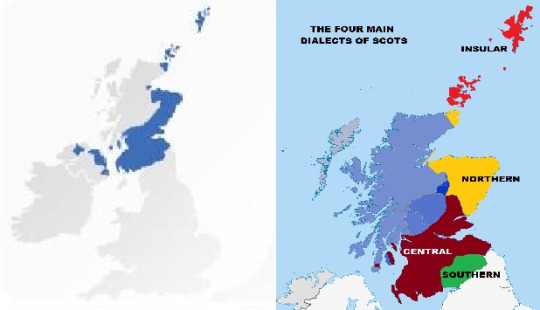
It has several dialects of its own, broadly categorized by location, ranging from Borders Scots to Orcadian Scots and everything in between. (And we can't forget Ulster Scots, a dialect brought to Ulster during the 1600s by Lowlander planters.) Due to this variation, modern Scots has no clear standardized form, though linguists have made several halfway-serious attempts over the past century or so to standardize orthography.
But what's been going on with Scots between David I and the present day? Let's dig in.
David I (in Gaelic, Daibhidh I mac Mhaoil Chaluim), who reigned from 1124 to 1153, initiated the proliferation of proto-urban societies across his kingdom. These societies were called "burghs", or "touns" in Scots, and they'll come in handy later. At about this same time, Norman French began to infiltrate the Scottish nobility, and Gaelic began to decline as a language of prestige among higher levels of society.
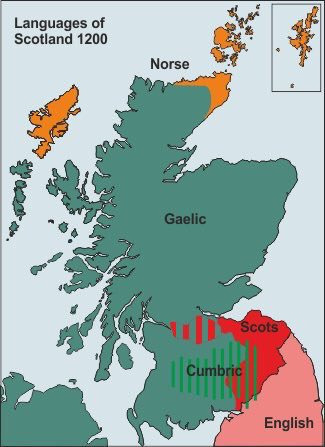
Once the 1200s started to creep around, the northern dialect of Early Middle English that would become Scots began expanding ever northward towards the Forth-Clyde line. This dialect was called "Inglis" by its speakers, and over the next century, it began to supplant Norman French and Gaelic as a common language within the burghs. The 1300s saw this "Inglis" tongue grow in prestige and it began to eclipse Norman French at even the higher levels of society, particularly within the courts. As the 1400s approached, it even began to replace Latin as the language of ecclesiastical and royal court proceedings.
The 1400s saw a relatively rapid geographic spread of Scots at the expense of Gaelic, which was cornered into the Highlands, Western Isles, and small pockets in the Lowlands (viz. Galloway, where Gaelic survived at least up to 1760). By the early 1500s, Scots began to be known as "Scottis", and Gaelic, which had previously been referred to thus, was now being dubbed "Erse" ("Irish") in attempts to otherize Gaelic. The 1500s saw the advent of Middle Scots, which was, in my amateur opinion, the golden era of the language, owing to its undisputed support at all levels of society across most of the kingdom. Around this time, a loose written standard did exist, but the language was still written how it sounded and regional variation was commonplace.

1567, however, saw the coronation of James VI of Scotland (note: James I of England and Ireland as well from 1603 on). His famous Bible translation (KJV) helped to set in motion the gradual Anglicization of Scottish society as it was dispersed among the population. In 1603, the Union of the Crowns brought Scots-speaking and English-speaking nobles into closer contact, and English gradually began to dominate the speech of the Scottish nobility (this exchange would produce what is now Scottish English, a distinct standardized dialect of English that some argue is one end of a linguistic spectrum, at the other end being "braid Scots").
Beginning in 1610 and continuing through to the 1690s, Scottish planters from across the western Lowlands and the Borders began to settle in Ulster, the northeastern region of Ireland. Over time, this group of people would come to develop their own regional identity, the Ulster Scots (or, often in a New World context, Scots-Irish). Their local dialect of Scots, while maintaining a Lowland character, picked up various influences from Hiberno-English (particularly in phonology) and from the Irish language (various contributions of vocabulary).

By about 1700, written Scots, at least in an official capacity, had become almost completely Anglicized. An example of an Anglicized convention introduced to Scots writing is the "apologetic apostrophe", an apostrophe that was inserted into a Scots word where an English-speaking person might expect a letter to be (for example, the Scots word "wi" (in English, "with") would have been written wi'). In 1707, the Acts of Union (Note: Panama played a role) seemed to solidify a shift in the upper-class opinion of the Scots language - what scarcely 150 years before was seen as the national language was now looked down upon by the nobility as "uneducated speech" or "bad English".
However, things looked different from a lower- and middle-class perspective. Contrary to high society, the common people began to take a renewed interest in the Scots language, and a literary revival began. This mid-1700s revival gave us such world-famous names as Robert Burns, Walter Scott, and Thomas Campbell. It was at this time that Scots transitioned from Middle to Modern Scots. However, features such as the apologetic apostrophe were retained during this period to gain wider readership among an English-speaking audience, a market that now effectively spanned the globe. (Meanwhile, the Highlands and Lowlands each experienced their own set of Clearances, and Scotland's diaspora began their journey to the edges of the empire.)
By the early 1800s, this "Scots fever" (NOTE: not a technical term) had reached the upper classes of society as they increasingly turned a Romanticist eye to the literature of their homeland, while simultaneously keeping Gaelic at arm's length. Since this point, there hasn't been any sort of top-level, government-sanctioned, institutional spelling reform or rulebook published on Scots orthography, although this hasn't stopped a wealth of Scots poetry and prose from being published through the years.
Since this era, there has been a relatively steady stream of interest in the language, though recent government initiatives have been taken to attempt to ensure the survival of, and increase interest in, Scots. This 2010 study by the Scottish Government sheds some light on modern public perception of the language within Scotland itself.
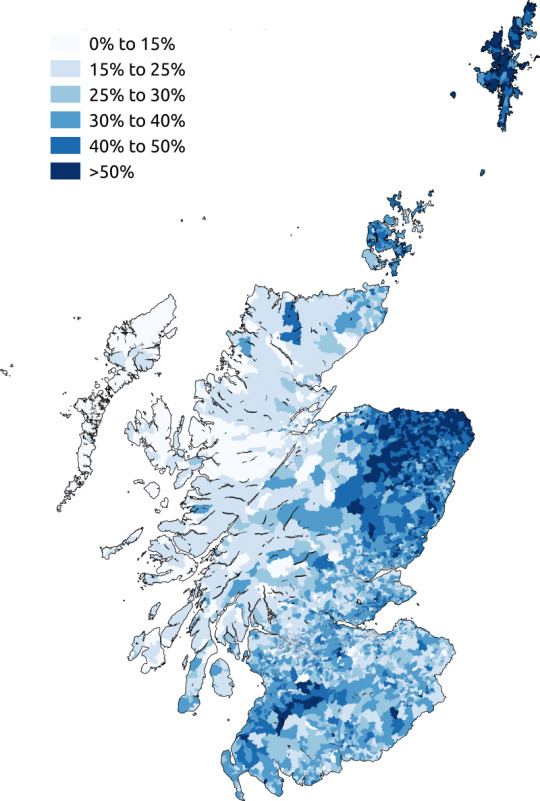
Over in Northern Ireland, the Ulster-Scots Agency was established as part of the wider Belfast Agreement of 1998 in efforts to promote the language and wider culture.
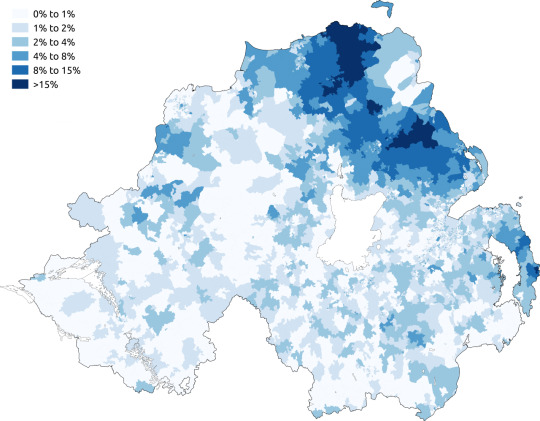
It's not all roses these days, however. A couple of years ago, it came to light that a North Carolina teenager had been, for over seven years, writing entries on the Scots Wikipedia, without any knowledge of the language. One Reddit user remarked that this teenager had caused "more damage to the Scots language than anyone else in history." (Perhaps take this with a grain of salt.)
Would you like to help protect the language?
The best way to protect a language is to learn it! If you click that link, there are several resources for adult learners of Scots to start their journey. My perennial advice, though: once you've got the basics down, use it! Find a Scots speaker and stumble your way through a conversation. Don't be afraid of making mistakes! (Note: everyone makes them.) One resource I've used in the past to learn some basics is the Open University's (entirely free!) Scots language and culture online course. All you need to do is sign up and work through the modules!
Follow for more linguistics and share this post! If you have any questions, feel free to ask!
#scots#scotland#germanic#language#languages#learning languages#langblog#langblr#indo european#united kingdom#ireland#northern ireland#ulster
219 notes
·
View notes
Text
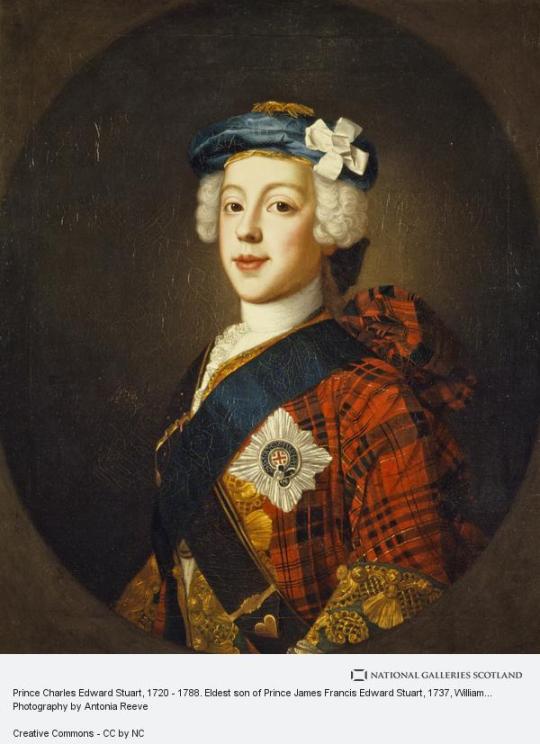
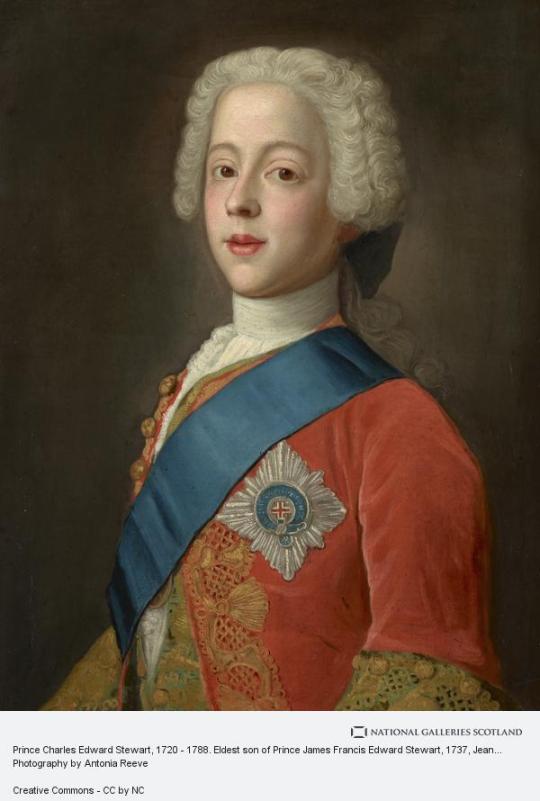
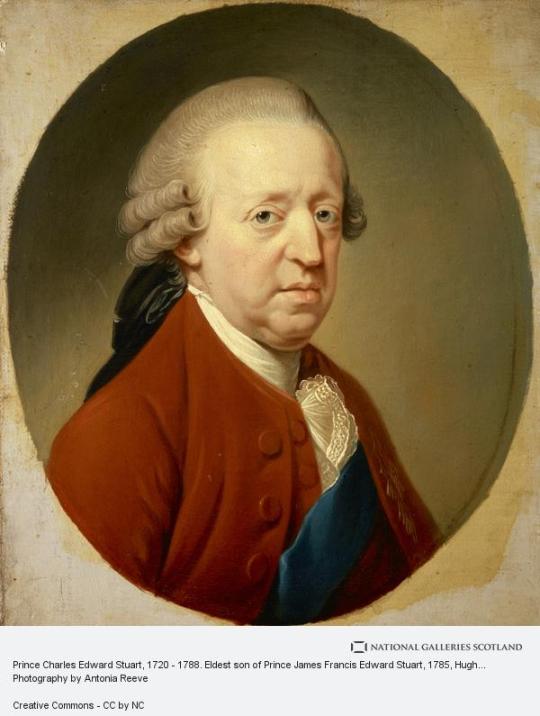
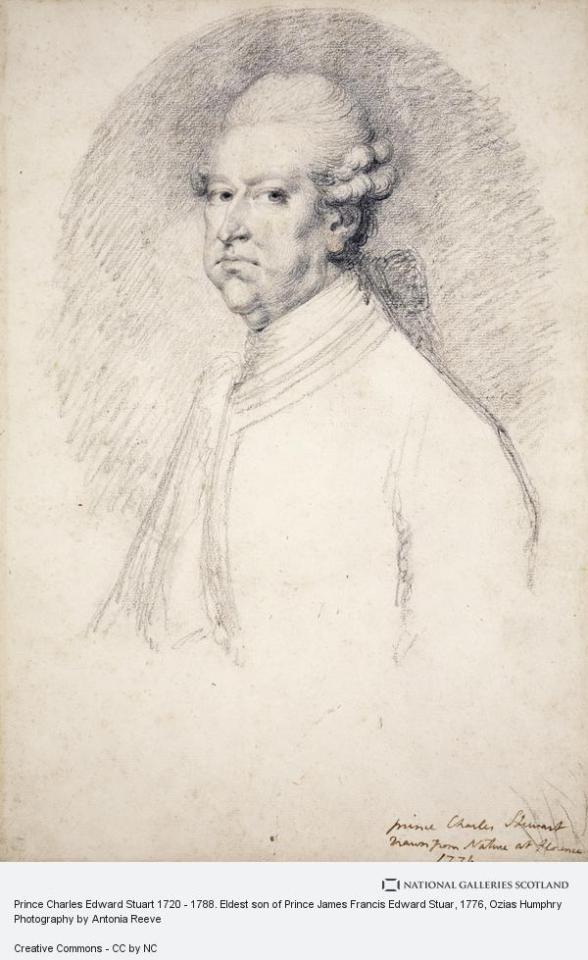
On January 31st 1788 Prince Charles Edward Stewart died in Palazzo Muti, Rome, he was 67.
A longer than normal post, but he had a profound affect on events in Scotland, so it's merited......
Well he actually died the day before, but you’ll need to read the post in full as to why history gives this date!
With Bonnie Prince Charlie featuring in a number of my posts throughout the year I will cover the latter part of his life today, basically after Culloden.
When Prince Charles escaped from the battlefield at Culloden, he left almost all his personal possessions behind. During the months that followed he was hunted by government forces throughout the western Highlands and Isles. He was helped by many loyal followers, and this period gave rise to some of the most enduring myths of the rising.
I think it shows the loyalty he was given by the Highlanders that he managed to evade capture, over the five months after Culloden and no doubt execution. He was sheltered, smuggled from hiding place to hiding place, and given clothes and other items, by Gaels who risked their own safety to help him.
Charles eventually escaped to France and then Rome. Many of his followers were captured and some executed. Others were forced into exile and had their lands forfeited. The government was determined to eliminate the Jacobite cause once and for all.
The Highlands were disarmed and even highland dress was banned for a time. The breakdown of the clan system accelerated, while improved roads and forts led to more effective government control of remoter areas.
On reaching the safety of France Charlie sked King Louis XV for 20,000 more soldiers to help "finish the job”. The myth propagated by his Hanoverian enemies was that Prince Charlie abandoned Scotland after Culloden. The memorandum written by the Prince to the King of France on 5th November 1746 provides evidence, in the Prince’s own hand, that directly contradicts this myth.
In the letter,seen in the third pic, the Prince wrote: “I never lacked Scottish subjects ready to fight. What I did simultaneously lack was money, supplies and a handful of regular troops; with but one of these three, I would today still be master of Scotland and probably the whole of England."
He goes on to claim he could have marched into London “unopposed" after his clear victory over General Cope’s troops at Prestonpans in September 1745 had he 3,000 more soldiers under his command.
At the time, Duke of Cumberland and the British Army were then in Flanders fighting the French and their allies in the Austrian War of Succession.
Things turned sour for Charles when the French and English reached a peace deal, where they recognised the right of King George and his successors to sit on the British throne, ending their support for the Stuart cause. Prince Charles was then expelled from France.
As far as the French Government were concerned, Prince Charles and his Highland supporters had served their purpose as pawns in their wider political game. The Prince had now become an embarrassment to them and was of no further value. Not that the peace lasted that long, both countries were at it again within ten years.
At one stage, accepting the fact that as a Catholic he was unlikely to ever be crowned King Charles indicated to his followers he was willing to become a Protestant in order to accede to the throne. In 1750 he visited London incognito, staying at a safe house near Holborn and converted to Protestantism by receiving Anglican Communion. But due to his increasingly brusque and argumentative manner he managed to alienate himself from the French foreign minister in 1759 who was planning an invasion of England in the midst of the Seven Years’ War between Britain and France. After Prince Charles’ father James III died in 1766, Pope Clement XIII recognised James as King of England, Scotland and Ireland but did not bestow the same title on his son Prince Charles.
Over the decades as he grew older and bitter about his lost cause he turned to alcohol as his dream for restoring his lineage faded.
The Prince is known to have travelled around Europe in the years that followed, trying to garner support for another tilt at regaining the crown for the Stuarts, Often using an alias, he spent a couple of years in Basel, Switzerland as W. Thompson physician and ‘gentillhomme Anglais.’ He later spent time in Florence in 1774, where he was provided with a residence by Prince Corsini, he used the alias Count of Albany at this time. Charles's health deteriorated in later life, and he was reported to have suffered from asthma, high blood pressure, swollen legs and ulcers. He suffered constantly from his illnesses, which required him to be carried by his servants to and from his carriage.
After separating, she claimed that Charles had physically abused her. This claim was generally believed by contemporaries. The historian Douglas states that Charles had been drinking following Saint Andrew's Day celebrations, and after accusing Louise of infidelities, may have attempted to rape her, resulting in her screaming to the extent that the household servants intervened. In the years that followed, the pope awarded Louise half of Charles's papal pension, and Charles's international reputation was greatly damaged. He was said to live an increasingly isolated and unhappy life, especially after his brother Henry agreed to house Louise at his estate.
By 1783 his health was deteriorating swiftly to the extent that during one bout of illness he was giver the last rites. Although Charles recovered, he agreed to create a new will, and signed an act of legitimation for his illegitimate daughter Charlotte. Charles also gave her the title "Duchess of Albany" in the peerage of Scotland and the style "Her Royal Highness", but these honours did not give Charlotte any right of succession to the throne. His daughter stayed with him until his death, she herself only lived for less than two years dying unmarried at Bologna in November 1789
Charles died in Rome of a stroke on 30th January 1788, the cardinals stated officially that he died on the morning of 31st January, as it was deemed unlucky to have him declared dead on the same date as his great-grandfather, King Charles I, who of course was covered in an extensive post yesterday.
On his death, a cast of his face was made, and his body was embalmed and placed in a coffin of cypress wood. Adorned with the Order of the Thistle, the Cross of St Andrew, the Order of the Garter and the Cross of St George
On Charles’s death in 1788, his brother, Henry Benedict, became the Jacobite Henry IX of England and I of Scotland, it was with him that the direct, legitimate line ended on his death in 1807. By this time the beleaguered cardinal, who had witnessed the French Revolution (and lost the financial support of his Bourbon cousin in the process) had begun receiving an annual pension of £4,000 from George III – yes, from the very Hanoverian monarch or, in Jacobite terminology ‘usurper’, that his father and brother had fought so hard, and at such great cost, to remove from the British throne. Henry, unlike his father and brother, did not press his claim.
There is an interesting article about Charles in the Scotsman from a year ago, unlike most of the posts I have read about him in the newspaper it is actually very sympathetic and defends him in some ways, it is quite scathing towards Diana Gabaldon‘s Outlander, not all of which is deserved in my own point of view, the show, and books , are after all a work of fiction, and only draw on actual events.
https://www.scotsman.com/.../outlander-promotes-a-deeply...
18 notes
·
View notes
Text
"Daniel Solander
Cape Solander is named after Swedish botanist Daniel Solander (1733-1782), who accompanied naturalist and botanist Joseph Banks on HMB Endeavour from 1768-1771.
A Gifted Student
Solander studied under famous botanist, Carl Linnaeus, at Sweden's Uppsala University. Before Solander completed his studies, Linnaeus sent him to London as his representative to work at the British Museum cataloguing the natural history collections, and to promote the Linnaean classification system. This system became the internation standard for the classification of all species and is still used today.
Unfinished Business
In 1768, Joseph Banks invited Solander to join in the scientific staff on HMB Endeavour on its voyage to the South Pacific. Together, Banks and Solander collected approximately 30,000 specimens including around 1,300 species new to Western science. The number of species they collected demonstrated the need for a classification system that could cope with Earth's biodiversity.
On his return to England, Solander became Joseph Bank's secretary and librarian and went on numerous collecting expeditions including to the Isle of Wight, the western highlands of Scotland, Iceland and Wales. He was also appointed keeper of natural history at the British Museum.
Solander died of a stroke in 1782 aged only 49, leaving much of his work incomplete, unpublished or waiting on contributions from others.
A Significant Legacy
Solander made important contributions to botany through his discoveries and his meticulous categorising of the specimens he and Banks collected around the world.
As early proponents of Linnaeus's systematic biology, Bank's and Solander's work here led to Kamay Botany Bay National Park being nominated as a UNESCO World Heritage Area. The national park is important both culturally and scientifically in 'The Rise of Systematic Biology' - the study of biological diversity and its origin.
This includes a taxonomic classification system for categorising organisms into related groups."
#steventure#blog#australia#hike#hiking#bushwalk#coastal walk#cape baily#lighthouse#solander#Cape solander#potter point#cape baily lighthouse#history#Australian history#botany bay#kurnell#nsw national park#Kamay Botany Bay National Park#bob brown#bob brown foundation#march for forests#end native forest logging#protest#politics#australian politics#nature#hiking blog#bushwalking blog#blogger
0 notes
Text
Gold for the Jacobite battles
I have been a fan of the Jacobite Rebiions. However, I have seen another comment.
I love the music about the Jabodite revesions of the early 1700s. However, as a DJ in the mid-90s, I interviewed Dick Daughan, a muscian, an identifier of Communismn. I have been watching a documentary of Scottish history.
I love the music, and I am aware of how Bonnie Charles Stuart was a hero, and still is, of Scottish history. I am also a follower of Scottish history of the history of what happened to the Scots after they lost the battles brought about for the Bonnie Prince.
OK, my question to Scots, or lovers of Scottish and the Highlanders.
The music is beautiful. But here is my question. The series I am watching says the gold that the Bonnie got was lost somewhere in the Western Isles. Yet Diana Gabaldons story about OUtlander claims is was found in the Eastern Isles, as was shown in one episode of Outlander. Where do most Scots believe it was found.
Do most Scots believer it is hidden somewhere in the Western Isles? Or as Diana says, in the Eastern Isles (one episode of Oulander had Jamie going to an Easter Isle where he thought he heard Claire calling to him.
I personally believe that the result of the loss of the Jocobites might have been lost in the Western Isles. Thus the islanders being a result of the Highlanders being exiled to Amerida, and the rise of the Highlanders being found in North Carolina. But that the Highlanders knew the gold was in the Eastern Isles, perhaps even Graham charercrers knowing where the gold is.
I am a fan of the Highlanders being exiled to America being deported because the English thought the Highands were better used for sheep than people. This is what Dick Gaughan thought when I interviewed him for my radio show. It destroyed my belief in the Over the Sea to Skye music, as sung by the Corries.
I would really like to know what the Scots, or the lovers of the true Scots, believe, and not what the beautiful music portrays.
Any Scots here, or lovers of Scots, believe?
Carol in Austin
Bonnie Charles Charlie
the clearances of the Highlands
Scotland as an imperial Country
0 notes
Text
Did You Know MacDonald Kilt? Exploring the Fascinating Story!
In the realm of fast-food giants, McDonald's stands tall as one of the most recognizable and successful brands worldwide. While everyone is familiar with its golden arches and iconic menu items, there's a lesser-known aspect of McDonald's history that might surprise you: the McDonald kilt connection. This article delves into the intriguing tale behind this unexpected link and how it adds another layer of depth to the fast-food giant's legacy.
What is the Clan MacDonald tartan kilt?
The Clan MacDonald tartan kilt is a cherished symbol of Scottish heritage, particularly associated with the powerful MacDonald clan. This distinctive tartan features a pattern of intersecting lines in colors like green, blue, black and red, woven into a unique design representing the clan's identity. Worn traditionally by the MacDonalds, who played a significant role in Scottish history, the tartan kilt not only exhibits a sense of pride but also signifies a connection to the clan's roots. Each thread in the fabric weaves together a story of lineage and allegiance, preserving a rich legacy that spans generations and holds a special place in Scottish culture. Unite with history, embrace the MacDonald spirit, and proudly wear your MacDonald Kilt today to be a part of something timeless.

Where did Clan MacDonald come from?
The Clan MacDonald traces its origins to Scotland, specifically the western Highlands. Known as one of the country's oldest and most prominent clans, they held sway over regions like the Isle of Skye and parts of the mainland. With a history spanning centuries, their legacy is interwoven with Scotland's landscapes and folklore. The Clan MacDonald's enduring influence is a testament to their deep-rooted presence in Scottish history and culture.
What is the MacDonald clan motto?
The MacDonald clan motto is "Per mare per terras," which translates to "By sea and by land" in English. This succinct phrase encapsulates the adventurous and determined spirit of the clan members throughout history. It reflects their historical ties to both the sea and the land, highlighting their maritime prowess and their ability to navigate diverse terrains. The motto serves as a reminder of the clan's versatile strengths and their unwavering commitment to their heritage.
What does A Macdonald tartan look like?
The MacDonald tartan is a captivating emblem of Scottish tradition, characterized by its striking array of colors: blue, green, red, and black. Interwoven into a harmonious pattern, these hues create a mesmerizing tapestry that encapsulates the essence of the MacDonald clan's heritage. The deep blue represents the vast expanse of the Scottish skies and waters, while the verdant green symbolizes the lush landscapes that have shaped the clan's history. Fiery red embodies the passion and courage that define the MacDonald spirit, while the solemn black serves as a reminder of the challenges faced and overcome. The MacDonald tartan is more than a fabric; it's a living connection to a storied past.
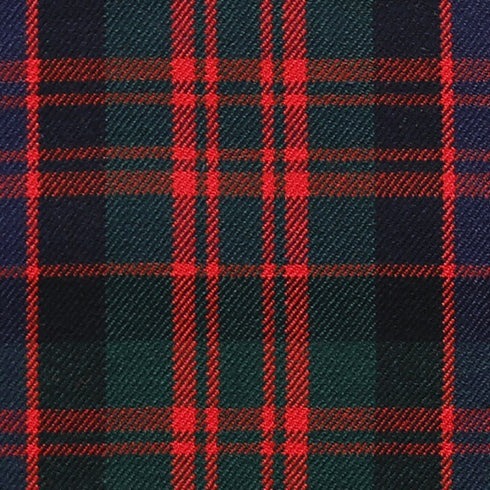
Cultural Impact and Controversy
Appreciation and Criticism
While many appreciated McDonald's efforts to celebrate Scottish heritage, others criticized it for potentially oversimplifying and commercializing a rich culture. Striking the right balance between appreciation and appropriation became a subject of discussion.
Navigating Cultural Sensitivity
In response to concerns, McDonald's took steps to navigate cultural sensitivity thoughtfully. Collaborating with Scottish cultural experts and organizations, the company aimed to ensure that its initiatives were respectful and well-informed.
Where to buy perfect kilt
When it comes to kilt buying, look no further than Fashion Kilt. Embark on a journey to find the perfect kilt that seamlessly blends tradition and modernity. Our brand, Fashion Kilt, offers a curated selection that caters to both classic tastes and contemporary styles. Discover high-quality kilts that reflect authentic craftsmanship and attention to detail. Whether it's for a special occasion or to embrace your Scottish roots, Fashion Kilt provides a diverse range, ensuring you'll find the ideal kilt that resonates with your unique personality.
Conclusion
The fascinating story of McDonald's and its kilt connection highlights the intricate interplay between culture, identity, and branding. From the introduction of a kilt-wearing Ronald McDonald to the incorporation of Scottish themes in promotions, McDonald's has skillfully woven tradition into its modern narrative.
FAQs
Is Ronald McDonald still associated with a kilt?
Yes, while the kilted Ronald McDonald isn't as prominently featured today, he remains an iconic symbol of McDonald's Scottish connection.
Did the kilt connection boost McDonald's sales?
While it's challenging to attribute sales directly to the kilt connection, the marketing strategy certainly garnered attention and contributed to the brand's unique appeal.
Are there other fast-food chains with similar cultural fusions?
Yes, several chains have experimented with blending cultural elements into their branding, though McDonald's kilt connection remains one of the most recognizable.
What other aspects of Scottish culture did McDonald's embrace?
Apart from the kilt and tartan patterns, McDonald's occasionally introduced Scottish-inspired menu items to further celebrate the culture.
0 notes
Text
University of Highlands & Islands
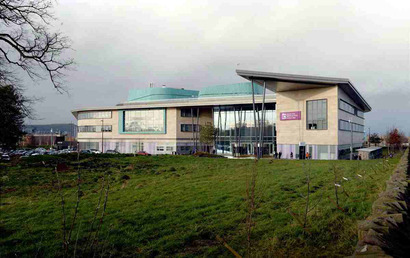
Overview
One of the well-known public non-profit universities, University of the Highlands and Islands is made up of academic partners. This distinctive institution demonstrates academic brilliance and values its independence. It is one of the few universities in Europe and the only one in Scotland's Highlands and Islands. Students have the good fortune to experience something unique and exceptional. University-level study in the Highlands and Islands is the university's motto. Thirteen autonomous research institutions and colleges make up the University, which functions as a single organisation. The university offers core programmes for studying English for undergraduate and graduate degrees, as well as world-class research initiatives. Everybody's attention is drawn to the original research and curriculum as well as the experienced tutors. In light of Scottish culture, communities, people, natural environment, economy, culture, and heritage, the university's reputation opens the way to a unique student learning experience.
Rankings and Achievements
The University of the Highlands and Islands comprises 69% of degrees that are available on more than two campuses.
University of the Highlands and Islands: UK Rankings
The University positioned the Top 10 most affordable UK universities in the Complete University Guide
It secured 89th position in The National Ranking of the University of the Highlands and Islands
University of the Highlands and Islands: World Rankings
The institute secured 848th place in THE World University Ranking,
It positioned 510 in the ARWU Ranking,
100% achievement of The Orkney College UHI rating.
History
In 1992, the University of the Highlands and Islands was established. In February 2011, the Privy Council granted the organisation full university status; in 2012, Anne, Princess Royal was appointed Chancellor of the University of the Highlands and Islands Court. The institution's academic partners are gradually spread out across Perth, Elgin, the Isle of Skye, Fort William, Shetland, Orkney, and the Western Isles. The former Royal Northern Infirmary building in Inverness served as the central hub's original location. The UHI network comprises of multi-campus universities connected to one another sequentially via technology since it is a very robust and distinctive network. After being granted higher education institute status by the Scottish Parliament in April 2001, it became known as the UHI Millennium Institute. Deans with extensive full-time experience were chosen for each of the three faculties in 2004. Additionally, the Open University Validation Service, the University of Strathclyde, and the University of Aberdeen provided authenticity to the University degrees prior to receiving taught degree granting authority (LDAP). The Higher National Certificate and Higher National Diploma programmes were granted by the Scottish Qualifications Authority.
Faculties
University of the Highlands and Islands consists of 13 colleges and research centres along with more than 70 local learning centres. The level of courses are divided into Degree, HNs, Postgraduate, Professional, and Vocational. The subject areas are given below:
Business, leisure, and tourism
Computing and IT
Creative industries
Education and childcare
Energy, engineering, and construction
Gaelic medium studies
Health and wellbeing
Humanities and social sciences
Science and environment
Facilities and Services
Students get Evening, Full time, Online, and Part-time study mode facilities.
The on-campus facility along with Student Route visa sponsorship,
Online study facility from students own country,
Stunning environment-friendly study spaces,
Students get Internationally respected degrees,
Students are benefitted from job-ready skills,
Several careers and employability services are available. The University provides Post-study work opportunities in the UK
The overseas students get individualized and personable support from the approved university representatives.
Virtual Learning Environment provides interactive online learning materials and submits assessments.
UHI’s world-class video conferencing facilities with expert tutors.
A well-equipped library with the latest IT facilities along with administrative services.
Student Life
The sole student organisation in Scotland, Highlands and Islands Students Association (HISA), serves as the voice of the students. The association prioritises regional and local representation and makes sure that students have the greatest possible experience. Students are an essential component of clubs and societies because they provide them with the chance to network and try new things. In the process of honing their talents, pupils' CVs benefit. The Association therefore plans a lot of activities so that students can use their knowledge in bigger settings. The UHI gives mental health issues top priority. It is crucial to maintain good physical and mental health while in college.
The online student body at UHI offers top-notch online learning support. Students can take part in online forums, workshops, and tutorials from whatever location they want to study in their spare time. The university offers a UHI Online Learning Community called Mahara and a UHI 24 Hour Help Desk Service. The social media platform gives both online and residential students the chance to learn, interact, and socialize. Inverness is a city with both natural and artistic beauty. People from all over the world are constantly drawn to the Moray Firth and River Ness shorelines. In order to give entertainment at all times, The Eden Court Theatre, the area for plays, films, concerts, and ballet, restaurants, Hootenanny Ceilidh Cafe Bar, and retail malls. The city offers both land and well-educated working regions that are desirable for inward investment.
Living Accommodation
The university belongs to dedicated halls of residence in Dornoch, Elgin, Fort William and Inverness.
Some campuses with private accommodation
Inverness College UHI
Lews Castle College UHI
Moray College UHI
North Highland College UHI
Perth College UHI
Sabhal Mòr Ostaig UHI
Scottish Association for Marine Science UHI
West Highland College UHI
Apart from them, other campuses are
Argyll College UHI
Highland Theological College UHI
NAFC Marine Centre UHI
Orkney College UHI
Shetland College UHI
Transport
The Scottish Government works with Transport Scotland, transport companies, HIE, and other stakeholders to build the transportation network between the Highlands and Islands and the north of Scotland. The Regional Transport Partnership has resolved on the Highlands and Islands Transport Partnership (HITRANS). As a result, there are public transportation options such buses, trains, island ferries, and air services. It is simple to move from one location to another thanks to bus services like long-distance coaches, urban services, tourist coaches, taxi services, and post buses. Both flying and driving are alternatives to the rail service. Amazing West Highland and Kyle lines, which stand for the tourism sites, offer the railway services. One million terminal passengers pass through nine major Highlands and Islands airports each year.
1 note
·
View note
Text
Roses are red, thistles are blue, Scots were complicit in imperialism too
#Things to print on a t-shirt#Only way to move forward is to acknowledge this ugly truth folks#And learn from it#Obviously there are nuances within Scotland's history and peoples#The Gaels of the western isles and highlands have a different experience than say shipbuilders in Govan#And both have a drastically different experience from those aristocratic landowners and Glasgow tobacco lords on their slave plantations#Who certainly had a very different experience to black Scots#Colonialism specialises in turning working class and oppressed peoples against each other#Instead of against the aristocracy and the rich businessmen#India to Ireland to Canada that's evident#But it's still a bloody history and something we have to face not sort of wave away and claim we either weren't part of or don't condone#Or we won't learn from it and move on#And before anybody comes at me for thistles not being blue; I have no interest in that argument it's a very obvious one#Thoughts on the Thistle#I'm sorry I'm not trying to start fights I just get so frustrated sometimes
7 notes
·
View notes
Photo

Hebridean blackhouse (taigh-dubh), Baile an Truiseil, Leòdhas, Western Isles.
This blackhouse was built between 1852 and 1895, and was the home of a crofting family and their animals until 1965, when they moved out. It is still fully furnished and preserved almost as the last family left it.
Blackhouses were very different from modern homes, as they housed animals as well as people, had rounded corners, had no chimney or windows. Sharing with animals made the house warmer and meant fewer buildings were needed.
The blackhouse has a central door. Inside is an aig an teine (‘living room’) and a bathaich (‘cattle byre’), with a parallel sabhal (‘barn’). A peat fire burns in the open hearth with the smoke filteeing thrlugh the roof. It is in the centre of the living room and it was the heart of family life, never allowed to go out. Smoke from the peat fire killed insects, and the smoke-laden thatch, which was replaced every so often, made excellent fertiliser for the fields. (Arnol, Eilean Siar, United Kingdom)
#outer hebrides#eilean siar#western isles#arnol#scotland#blackhouse#isle of lewis#lewis#leòdhas#peat#hearth#highlands#byre#crofting#croft#crofters#history#archaeology#thatch#thatched roof#thatched house#own
55 notes
·
View notes
Text
A rant against Karen Traviss' understanding of history and her FAQ answers
Did you base the Mandalorians on the Spartans?
<cite> No. I didn't. </cite> Fair enough.
<cite> I really wish history was taught properly - okay, taught at all - in schools these days, because history is the big storehouse that I plunder for fiction. It breaks my heart to hear from young readers who have no concept even of recent history - the last fifty years - and so can't see the parallels in my books. You don't have to be a historian to read my novels, but you'll get a lot more out of them if you explore history just a little more. Watch a history channel. Read a few books. Visit some museums. Because history is not "then" - it's "now." Everything we experience today is the product of what's happened before. </cite> Yeah, I do to. Please, Ms Traviss, go on, read some books. Might do you some good. And don't just trust the history channels. Their ideas about fact-checking differ wildly.
<cite> But back to Mandos. Not every military society is based on Sparta, strange as that may seem. In fact, the Mandos don't have much in common with the real Spartans at all. </cite> You mean apart from the absolute obsession with the military ["Agoge" by Stephen Hodkinson], fearsome reputation ["A Historical Commentary on Thucydides" by David Cartwright], their general-king ["Sparta" by Marcus Niebuhr Tod], the fact that they practically acted as mercenaries (like Clearch/Κλέαρχος), or the hyper-confidence ("the city is well-fortified that has a wall of men instead of brick" [Plutarch, Life of Lycurgus])...
<cite> A slightly anarchic, non-centralized, fightin' people? Sounded pretty Celtic to me. Since I went down that path, I've learned more about the Celts (especially the Picts), and the more I learn, the more I realise what a dead ringer for Mandos they are. But more of how that happened later... </cite>
The Celtic people are more than one people, more than one culture. Celtic is a language-family! In the last millennium BC nearly every European ethnic group was in some ways Celtic, and they were not one. Later, after the Germanic tribes (also not one people, or a singular group) moved westwards, the Celtic cultures were still counted in the hundreds. Not only Scotland was Celtic! Nearly all of Western Europe was (apart from the Greek and Phoenician settlers on the Mediterranean coasts). The word “Celts” was written down for the first time by Greek authors who later also used the word “Galatians”. The Romans called these people “Gauls”, and this word was used to describe a specific area, bordered by the Atlantic Ocean, the Cévennes and the Rhine: “Gaul”. So the Celts, the Galatians and the Gauls were all part of the same Celtic civilisation. "Celts, a name applied by ancient writers to a population group occupying lands mainly north of the Mediterranean region from Galicia in the west to Galatia in the east [] Their unity is recognizable by common speech and common artistic traditions" [Waldman & Mason 2006] Mirobrigenses qui Celtici cognominantur. Pliny the Elder, The Natural History; example: C(AIUS) PORCIUS SEVERUS MIROBRIGEN(SIS) CELT(ICUS) -> not just one culture "Their tribes and groups eventually ranged from the British Isles and northern Spain to as far east as Transylvania, the Black Sea coasts, and Galatia in Anatolia and were in part absorbed into the Roman Empire as Britons, Gauls, Boii, Galatians, and Celtiberians. Linguistically they survive in the modern Celtic speakers of Ireland, Highland Scotland, the Isle of Man, Wales, and Brittany." [Celtic Culture: a historical encyclopedia. by John Koch] "[] the individual CELTIC COUNTRIES and their languages, []" James, Simon (1999). The Atlantic Celts – Ancient People Or Modern Invention. University of Wisconsin Press. "All Gaul is divided into three parts, one of which the Belgae live, another in which the Aquitani live, and the third are those who in their own tongue are called Celtae, in our language Galli." [Julius Caesar, De Bello Gallico] <= I had to translate that in school. It's tedious political propaganda. Read also the Comentarii and maybe the paper "Caesar's perception of Gallic social structures" that can be found in "Celtic Chiefdom, Celtic State," Cambridge University Press. The Celtic tribes and nations were diverse. They were pretty organized, with an academic system, roads, trade, and laws. They were not anarchic in any way. They were not warriors - they were mostly farmers. The Celts were first and foremost farmers and livestock breeders
The basic economy of the Celts was mixed farming, and, except in times of unrest, single farmsteads were usual. Owing to the wide variations in terrain and climate, cattle raising was more important than cereal cultivation in some regions.
Suetonius addressing his legionaries said "They are not soldiers—they're not even properly equipped. We've beaten them before." [not entirely sure, but I think that was in Tacitus' Annals]
Regarding the Picts, in particular, which part of their history is "anarchic"? Dál Riata? the Kingdom of Alba? Or are you referring to the warriors that inspired the Hadrian's Wall? Because no one really knows in our days who the fuck they were. The Picts’ name first appears in 297 AD. That is later. <cite> Celts are a good fit with the kind of indomitable, you-can't-kill-'em-off vibe of the Mandos. Reviled by Rome as ignorant savages with no culture or science, and only fit for slaughter or conquest, the Celts were in fact much more civilized than Rome even by modern standards. </cite> That's how the Romans looked at pretty much every culture that wasn't Greek, Roman, Phoenician, Egyptian, or from Mesopotamia (read, if you want, anything Roman or Greek about the Skyths, the Huns, Vandals, Garamantes...).
<cite> They also kicked Roman arse on the battlefield, and were very hard to keep in line, so Rome did what all lying, greedy superpowers do when challenged: they demonized and dehumanized the enemy. (They still used them in their army, of course, but that's only to be expected.) </cite> They were hard to keep in line, but they most definitely did not kick Roman arse on the battlefield. Roman arse was kicked along the borders of the Roman Empire, such as the Rhine, the Danube, the Atlas mountains, etc. And mostly by actually badly organized, slightly anarchic groups, such as the Goths or the Huns (BTW the Huns were not a Germanic people, even though early 20th century British propaganda likes to say so). Though they were also decisively stopped by the Parthians. Who were very organized. Ah well. <cite> While Rome was still leaving its unwanted babies to die on rubbish dumps - a perfectly acceptable form of family planning to this "civilisation" - and keeping women as chattels devoid of rights, the barbarian Celts had a long-standing legal system that not only gave women what we would think of as equal rights, but also protected the rights of the elderly, children, and the disabled. They had a road network across Europe and worldwide trade long before the Romans ever got their act together. And their science - well, their astronomical calculations were so sophisticated that it takes computers to do the same stuff today. </cite> See? You even say yourself that they weren't actually anarchic. Also you're not completely right: 1. women (of most Celtic cultures, with one notable exception being the Irish) were not allowed to become druids, e.g. scientists, physicians, priests, or any other kind of academics, so they did not have equal rights. Also, as in other Indo-European systems, the family was patriarchal. 2. the roads they had were more like paths, and did not span the entirety of Europe; the old roads that are still in use are nearly all of them Roman. Had the Celtic inhabitants of Gallia or Britannia built comparable roads, why would the Romans have invested in building a new system on top? 3. world-wide? Yeah, right. They traded with those who traded with others and so were able to trade with most of southern Eurasia and northern Africa, as well as few northern parts (Balticum, Rus), but that's (surprise) not the whole world. 4. most people use computers for those calculations you mention because its easier. It's not necessary. I can do those calculations - give me some time to study astronomy (I'm a math major, not physics) and some pencils and paper. 5. and - I nearly forgot - the kids didn't die. That was a polite fiction. The harsh truth is that most Roman slaves were Romans... <cite> So - not barbarians. Just a threat to the empire, a culture that wouldn't let the Pax Romana roll over it without a fight. (Except the French tribes, who did roll over, and were regarded by the Germanic Celts [...]) </cite> WTF Germanic Celts? What are you smoking, woman? Isn't it enough that you put every culture speaking a language from the Celtic family in one pot and act as if they were one people, now you have to mix in a different language-family as well? Shall we continue that trend? What about the Mongolian Celts, are they, too, proof that the Celts were badass warriors? I think at this point I just lost all leftover trust in your so-called knowledge. <cite> [...] as being as bad as the Romans. Suck on that, Asterix... </cite> Asterix was definitely a Celt, and unlike the British Celts, he was not a citizen of the Roman Empire.
<cite> Broad brush-stroke time; Celts were not a centralized society but more a network of townships and tribes, a loose alliance of clans who had their own internal spats, but when faced with some uppity outsider would come together to drive off the common threat. </cite> They might have tried, but they didn't. The first and only time a Celtic people really managed to drive off some uppity outsider would be 1922 following the Anglo-Irish Treaty of 1921*. The fact that France, Spain, Portugal speak Romance languages and the British (or Irish) Isles nearly uniformly speak English should be proof enough.
*Unless you count Asterix. <cite> You couldn't defeat them by cutting off the head. There was no head to cut off. </cite> You mean unlike Boudica and Vercingetorix. Oh wait. Tacitus, in his Annals, said that Boudica's last fight cost 80,000 Britons and 400 Romans their lives. He was probably exaggerating. But it definitely stopped much of the British resistance in its tracks. <cite> To the centralized, formal, rather bureaucratic Romans, for whom the city of Rome was the focus of the whole empire, this was a big does-not-compute. The Celts were everything they didn't understand. And we fear what we don't understand, and we kill what we fear. </cite> While that is totally true, it's also completely off the mark. The Romans demonized the druids, not every Celt, and they were afraid of what was basically an academic network. That had nothing to do with war. <cite> Anyway, Mandos....once I took a single concept - in this case, the idea of clans that operated on a loose alliance system, like the Celts - the rest grew organically. I didn't plan it out in detail from the start. </cite> That's really obvious. Maybe looking at some numbers and remembering that you weren't planning a small, local, rural, medieval community would have helped, too. I mean lets have a look at, say, Scotland (since you specifically mentioned the Picts): they still have less than 6 mio. people all together, and that's today. Mandalore is a sector. A sector of Outer Space with at least 2000 inhabited planets. How do you think that translates? It doesn't. <cite> I just asked myself what a culture of nomadic warriors would value, how they would need to operate to survive, and it all grew inexorably by logical steps. The fact that Mandos ended up as very much like the Celts is proof that the technique of evolving a character or species - find the niche, then work out what fits it - works every time. It creates something very realistic, because that's how real people and real societies develop. </cite> Celtic people were usually not nomadic! And, once again, non of them were predominantly warriors! It's really hard to be a nomadic farmer. I believe the biggest mistake you made, Ms Traviss, is mixing up the Iron Age (and earlier) tribes that did indeed sack Rome and parts of Greece, and that one day would become the people the Romans conquered. And apart from the Picts they really were conquered. <cite> So all I can say about Mandos and Spartans is that the average Mando would probably tell a Spartan to go and put some clothes on, and stop looking like such a big jessie. </cite>
I'd really like to see a Mando – or anyone – wearing full plate without modern or Star Wars technology in Greece. Happy heatstroke. There is a reason they didn't wear a lot (look up the Battle of Hattîn, where crusaders who didn't wear full helmets and wore chainmail* still suffered badly from heat exhaustion). [Nicolle, David (1993), Hattin 1187: Saladin's Greatest Victory] *chainmail apparently can work like a heatsink CONCLUSION You're wrong. And I felt offended by your FAQ answers. QUESTION You're English. You're from England. A group - a nation - that was historically so warlike and so successful that by now we all speak English. A nation that definitely kicked arse against any Celtic nation trying to go against them (until 1921, and they really tried anyway). A nation that had arguably the largest Empire in history. A nation that still is barbaric and warlike enough that a lost football game has people honestly fearing for their lives.
Also, a Germanic group, since you seem to have trouble keeping language-families and cultures apart. If we were to talk about the family, we could add on the current most aggressively attacking nation (USA) plus the former most aggressively attacking nations (the second and third German Reich), also the people who killed off the Roman Empire for good (the Goths and Visigoth), the original berserkers (the Vikings) and claim at the very least the start of BOTH WORLD WARS. Why did you look further?
Some other sources:
Histoire de la vie privée by Georges Duby and Philippe Ariès, the first book (about the antiquity) I read it translated, my French is ... bad to non-existent
The Day of the Barbarians: The Battle That Led to the Fall of the Roman Empire (about the Huns) by Alessandro Barbero
If you speak Dutch or German, you might try
Helmut Birkhan: Kelten. Versuch einer Gesamtdarstellung ihrer Kultur, Verlag der Österreichischen Akademie der Wissenschaften, Wien
Janssens, Ugo, De Oude Belgen. Geschiedenis, leefgewoontes, mythe en werkelijkheid van de Keltische stammen. Uitgeverij The House of Books
DISCLAIMER
I’m angry and I wrote this down in one session and thus probably made some mistakes. I’m sorry. Or maybe I’m not sorry. I’m still angry. She can’t know who reads her FAQ and at least two of her answers (on her professional website) were offensive to the reader.
#history#england#scotland#ancient celts#roman empire#mandalorians#sparta#proud warrior race#shitty research#rant#me ranting#fuck this#karen traviss
82 notes
·
View notes
Text
Wild Cherry:
The Magic of the Hag-Berry Tree

When it comes to the magic of trees, one that is all too frequently overlooked and eschewed in favor of other trees more central to popular Celtic mythos, is that of the Wild Cherry, known by various names throughout the British Isles (and beyond,) including Gean, Hag-Berry, Hackberry, and Mazzard.
Wild Cherries have been cultivated and used by humans for thousands of years, serving a number of medicinal purposes for numerous cultures. In the U.S., a number of indigenous cultures in the East made use of the trees, particularly the dried inner bark, as a circulatory sedative for the treatment of Fever, Diarrhea, Pain, and Agitation. The root was also used to treat Gastrointestinal Parasites, Burns, Sores, and other, similar skin issues. This medicinal wisdom was later adopted by early colonial invaders, and went on to influence various aspects of modern western pharmacology, but probably none so widely known as the use of the trees’ fruit and bark to create an antispasmodic syrup with mild expectorant properties. Indeed, the fruit and bark of the Wild Cherry has been widely used since antiquity to prepare herbal syrups, tinctures, and teas that aid with sore throat, coughing, and congestion, the effectiveness of which can still be seen echoed today in certain pharmaceutical cough syrups.
With this array of historically observed medicinal attributes owed to the Wild Cherry Tree, it’s no shock then that it has been associated with healing and the Healing Arts. In the course of the work I’ve done with tha tree, I have definitely observed its efficacy in aiding me with healing magic—a virtue only underscored by the poisonous nature of Wild Cherry, which harbors cyanogenic compounds in its wood, leaves, and fruit pits. When it comes to the magical properties of Wild Cherry, however, the most widely recognized is probably its use in dealing with feelings and, in particular, romance. Examples of this can be found in traditional lore and practices, such as the belief that one can attract a lover by tying a lock of their hair around the bough of a Wild Cherry in bloom, or that one can create an amulet to inspire love using Cherry Pits.
Though Wild Cherries may be best known for their aptitude with romantic magic, they are associated with other knacks and traditions as well. Divinatory Magic, for example, has historically held a notable station in the folklore surrounding Wild Cherry trees in Europe. One piece of British lore asserts that a Cuckoo must eat three full meals of cherries before it may stop singing. An oracular children’s rhyme from Buckinghamshire, meant to be sung if one encountered a Cuckoo bird in a Cherry Tree, says:
“Cuckoo, cherry tree,
Good bird tell me,
How many years before I die?”
It was believed that the number of times the Cuckoo called after the conclusion of the song correlated to the number of years.
Another tradition states that, if one should like to uncover when they will marry, they need only count the number of Cherry pits left on a plate after eating, while repeatedly saying:
“This year, next year, sometime, never.”
Whatever word they were saying when the last pit had been counted, told the querent their fate.
Other traditions involving the Wild Cherry ranged from the more celebratory and benign—such as the Swiss belief that, if one should want to ensure a plentiful fruiting of their Cherry Trees, they must give the first fruit of each new season to a person who has recently given birth—to the more obscure and sinister—such as the old Kentish belief that, if one should walk through a stand or orchard of the trees, having failed to rub their shoes with cherry leaves, they will die choking on a Cherry Pit.
Miscellaneous folk-observances relating to the Wild Cherry tree have, in fact, existed throughout Europe, and particularly so, in Eastern Europe. In the region of former Czechoslovakia, cherry branches were once Harvested on the Feast of St. Barbara—December 4th—and then brought into the home in order to force blossoms by Christmas. The Danish historically believed in malevolent forest spirits who frequently inhabit old cherries and cause harm to travelers who approach them. Likewise, Albanians long believed that certain trees—especially old Cherry trees—were haunted by devils who caused a swelling of the feet and hands for any unfortunates who stopped to rest in their cursed shade. In Lithuania, people were known to believe in ademon, or god, named Kirnis who was a protector the trees. Alternatively, in Serbia, they are associated with the Vila—elfin creatures who ride stags bridled with snakes and steal children consigned to the Devil by their angry mothers. They were often said to be found dancing ‘round the trunks of Wild Cherry trees, as described in Serbian Ballads as translated by John Bowring:
“Cherry! dearest Cherry!
Higher lift thy branches
under which the Vilas
Dance their magic roundels.”
Even with all of these associations and beliefs surrounding the Wild Cherry, one set of Celtic beliefs and observances still holds particular significance to my heritage and practice. This lore, which existed in various parts of the British Isles (though it was centralized in Scotland,) viewed the Wild Cherry, more commonly referred to by Gean or Hag-Berry in the region, as a “Witch Tree” or “Witches’ Tree.” It was thought of as a very mysterious plant, and in the Highlands it was considered fateful to come across one, though travelers remained quite wary of them. In fact, the belief that Wild Cherries were Witch Trees was pervasive enough that, for a time, it was considered taboo to cut or use the wood of the tree, for fear of inviting malefic influences into one’s life.
Between the curative, divinatory, persuasive, malefic, and spectral qualities of the Wild Cherry, it is a tree which is all too frequently overlooked, and worth getting to know. It has certainly been a boon to my own Craft to learn more about the plant and its history.
#traditional withcraft#witchcraft#magic#botanical magic#tree lore#tree magic#herbalism#herbcraft#Wild Cherry#Gean#Hag-berry
98 notes
·
View notes
Text
Abandoned places: Dunalastair Castle/The Hermitage, ruins in the Scottish Highlands, Homestead of Clan Robertson...
The Scottish Highlands have a storied history and one steeped in romantic imagery, locations & characters. The history of the Scottish Highlands for the last few centuries is linked in the minds of many with the Scottish Clans system, an outgrowth of ancient Celtic social traditions. The clan system, despite a common belief of one single related family, is in fact a more broad system of kinship. One in which a singular family would maintain leadership of surrounding families in the area and in exchange for their recognized leadership and the collection later of taxes, the leading family’s most senior patriarch was to provide guidance and protection to the loyal families, creating a unique social bond where all were “related” or members of the same clan. These leaders were the clan chiefs and traditionally lead the able bodied men of the clan in times of war and conducting raids on rival clans, usually for cattle, the common currency of Scottish clans. Meanwhile, in times of peace they made alliances and conducted diplomacy with other clans, sometimes through marital alliances. Over time, clan members whether descended from the chief or in member families adopted a common surname or variations thereof, these become known as the septs of the clan and over time different branches could expand as lands changed hands. Its from this system that well known Scottish surnames have spread the world over such as Stewart, Campbell, Bruce, Montgomery, MacDonald, MacKinnon, Munro/Monroe, Macleod, Mackenzie, Robertson and others have come to be known.
Clan Robertson, known in Gaelic as Clann Donnachaidh (Clan Duncanson) has two hypothesized origins of their name. One is they descend from the second son (Duncan) of the Scottish Lord of the Isles Angus MacDonald, descendant of the well known Somerled of mixed Gaelic/Viking ancestry. The second, more widely accepted theory is lineal descent from the Gaelic (Celtic) Earls of Atholl, a district in the Highlands on tradition Clan Robertson land. These earls were descended from the King of Scots, Duncan I (1001-1040), probably through his son Mael Muire, made Earl (ruler) of Atholl.
The name Robertson came about in the 15th century when the 4th Clan Chief, Robert Duncanson, an ardent supporter of the Stewart King of Scotland, James I was angered by the monarch’s murder. He then tracked down and captured two of the conspirators, Sir Robert Graham & Walter Stewart, Earl of Atholl (James I’s uncle). Robert handed over the conspirators to be placed under torture and death by order’s of James I’s wife, Joan Beaufort. Robert Duncanson was awarded the crest badge that remains with the clan to this day by James II on 1451. The crest shows the a imperial crown clutched in a hand with the clan motto in Latin displayed: Virtutis gloria merces (glory is the reward of valor). As a further reward of gratitude from the Scottish king, the Clan Chief and clan got the additional lands in the realm of Atholl, including the Barony of Struan, over which Clan Chiefs rule to this day. In honor of Robert Duncanson, his descendants became known as Robertson which spread to the all members of the clan subsequently. Presently, it has many variations including Robb, Robbie, Roberts, Robins/Robbins, Robison etc. Other variations from the original Duncanson include Duncan & Reid.
Struan & Atholl are found in the Scottish Highlands in the traditional county of Perthshire, modern day Perth & Kinross. The clan lands included the villages of Struan and Blair Atholl among others as well as Lochs Tay & Rannoch and are to be found in the Grampian Mountains, a range that makes up the Central Highlands. It is a land with snow covered mountains, forests, many rivers and valleys intertwined with the aforementioned lakes and some moorlands to the west.
From the late 17th century into the 18th century, one of the longer reigning clan chiefs of Clan Robertson was Alexander Robertson, 13th Chief of Clan Robertson (circa 1670-1749) who in time would be known as the Poet Chief for his love of the written word and poetry. He was known as a fierce Jacobite, displaying the long standing loyalty to the Stuarts/Stewarts, he is the only known clan leader to have fought in all three Jacobite rebellions (1689, 1715 &1745) against the armies of William III and later the Hanoverian Kings of Great Britain. In 1746 his lands were confiscated following the defeat of Jacobite forces including Highlanders at the last pitched battle fought on British soil, the Battle of Culloden.
Alexander Robertson had no children and so his chiefdom passed on to other family. In his lifetime, he built a castle estate he called the Hermitage, it was located near the River Tummel between the Dunalastair Reservoir and Loch Rannoch, the famed mountain Schiehallion with its snowcapped peaks overlooks the grounds. It is surrounded by forest and it served as the traditional Clan seat or castle. The Hermitage was a place where Alexander entertained his guests with drunken parties and poetry recitals recalling the great historical deeds of his ancestors, often portrayed in a romanticized heroic manner. His poetry was sometimes scandalous both for its sexual explicitness of romantic conquests, innuendo and sedition against the Hanoverian monarchs of Britain. He also forbade women from entering the grounds of the Hermitage due to his perceived misogyny as sometimes reflected in his poems reflecting his own sexual conquests. In 1746, following the defeat at Culloden, the Hermitage was burned to the ground by Hanoverian government troops as a lesson to the leaders of the rebellious Jacobite movement.
Alexander, moved into a small single room hut some miles to the west in Rannoch Moor, the western most part of the traditional Robertson lands. He was still the Clan Chief but dispossessed of his traditional lands and his cause he turned to his only two comforts at that time, poetry and alcohol. He still wrote of the heroic deeds of the clan’s ancestors, performing a clan essential duty, ancestor worship. However, his alcoholism continued to worsen and caused health issues in his advanced age. He had few visitors willing to visit him in the isolated and desolate location he found himself in, which coupled with alcohol fueled persona increased his isolation, he died in 1749, around the age of 80. Despite his alienation in the last few years of his life, Alexander’s coffin was accompanied by 2,000 clansmen who followed it 15 miles across moorland, river valleys and mountain lined lake shores to be buried in the old graveyard of Struan, part of the clan’s barony.
Eventually, a new home was built on the site of the Hermitage which included double towers around the year 1800. This home was called Mount Alexander, after the famed Poet Chief. In 1853, Clan Robertson’s 18th chief, George Duncan Robertson sold it to the MacDonald family. The new owner, Sir John MacDonald, demolished Mount Alexander and by 1859 completed the structure which stands today, built in the baronial style it was known as Dunalastair House (Alexander’s Fort) also in honor of the famed Poet Chief and his Hermitage estate. It went through a number of owners and the greater estate has current owners but Dunalastair House was in use as a residence up through World War I, by the conclusion of that time, it no longer could maintained due to expense for the many servants and groundskeepers needed. During World War II, it was used as a boarding school for Polish boys who fled to Britain to escape the Nazi and Soviet takeover of their homeland, it was also converted to a girls school later. However, the home was not well maintained and by the 1950′s its remaining contents were at last sold off. Abandoned thereafter, it was subject to vandalism and the elements of weather. The lead roof was stolen by the 1960′s and since then the Scottish rains had emptied onto the roofless stone ruins with its towers and spires, still with a dirt road leading to its grounds in the midst of forested lands, the ruins are visited by curious travelers to this day. The surrounding grounds are still owned by a private family but they now have another home they reside in, there are cottages on the estate that are rented out to travelers and there is a nearby hotel that also uses the name Dunalastair.
In the present, no grant or additional money has been put into restoring the house to its former glory, so it remains a ruin of days long since passed, but the site, nestled amidst the Highlands and in the shadow of Schiehallion’s peak and surrounded by flowing rivers, shimmering lakes and groves of forest over rolling hills is a romantic spot, like it was in the Poet Chief’s day. Also on the grounds are the burials of a number of former Robertson Clan chieftains, reminders of times of times long gone...
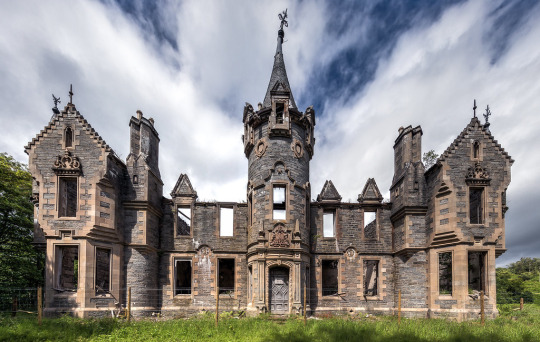
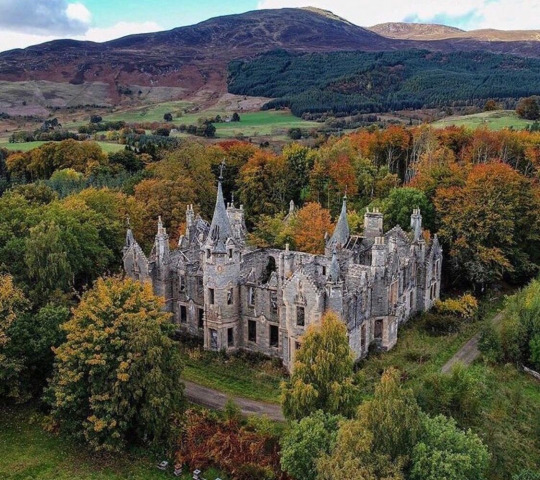
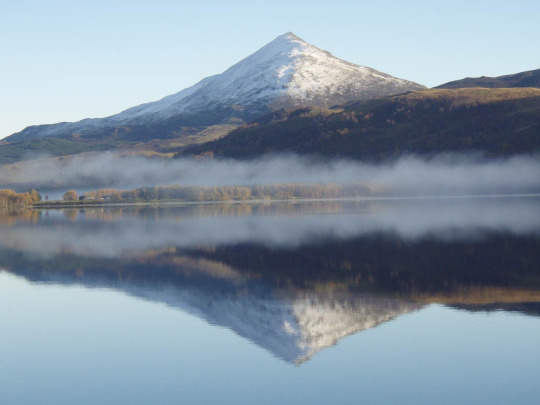
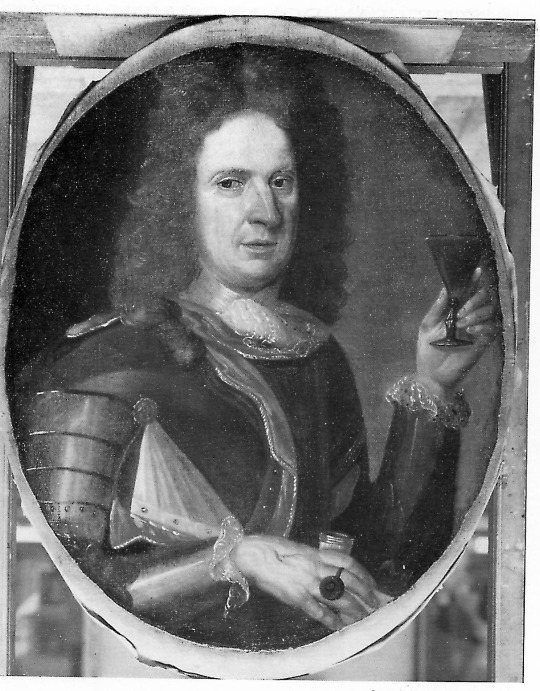
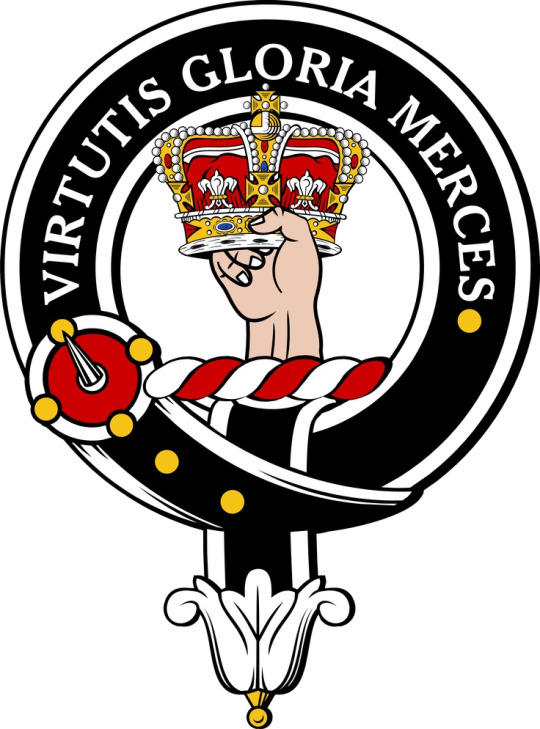
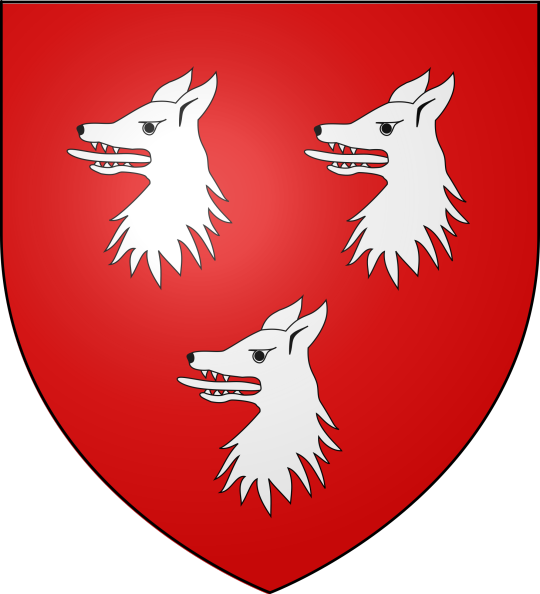
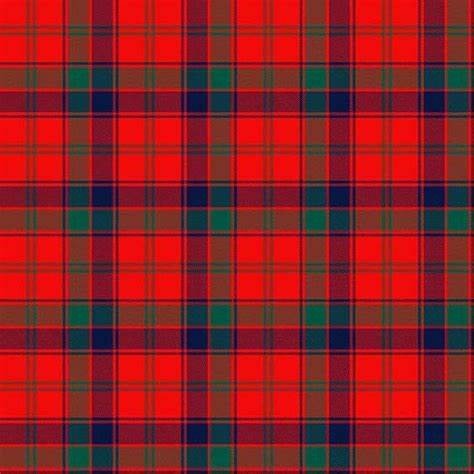
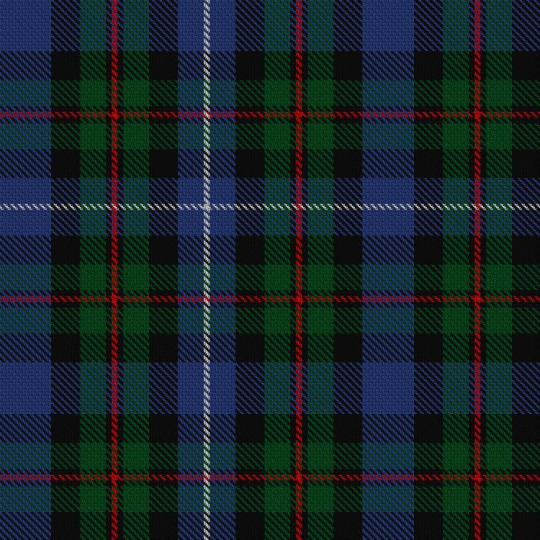
#dunalastair#scotland#scottish highlands#scottish clans#clan robertson#clan donnachaidh#loch rannoch#schiehallion#jacobites#17th century#18th century#battle of culloden#highlands#highlander#tartan#ancestors#poetry#alexander robertson#struan#atholl#blair atholl#loch tay#gaelic
10 notes
·
View notes
Photo




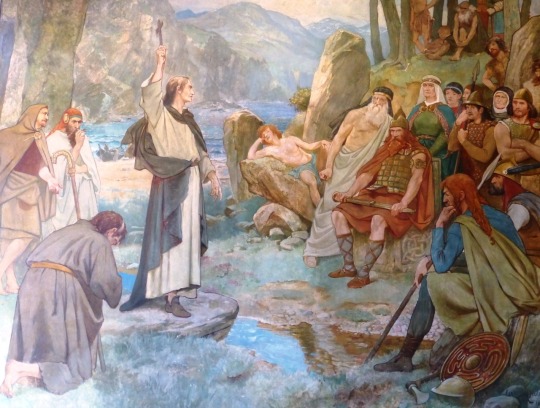

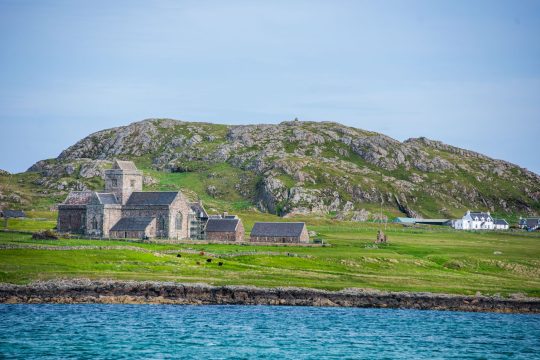
St. Columba is said to have been born in Donegal, Ireland on this day in 521AD.
Born into the royal Ui Neill (O’Neill) clan, Columba demonstrated scholarly and clerical ability early in life. Entering the monastic life, he was first received his training from Finnian of Moville and then from Finnian of Clonard. Even before his ordination to the presbyterate, he founded the monasteries of Derry (546) and Durrow, and probably Kells.
Twelve years after his ordination, he and a dozen companions left Ireland for Iona, a small island off the coast of what is now the southwest of Scotland. According to legend, Columba’s tiny coracle had washed ashore on the island, and the Irish king of Dal Riada, a Gaelic kingdom in the western isles and Highlands, made a gift of the island to him. Columba remained in this northwestern part of the island of the British Isles for the rest of his life, returning to Ireland only for occasional, though important, visits.
On Iona Columba founded the celebrated monastery which became the center for the conversion of the Picts, who were still largely pagan. He was kindly received on his missionary journeys among the Picts and the Irish of the Dal Riada and was allowed to preach, to convert, and to baptize. He converted Bruide, king of the Picts, and in 574 he consecrated Aidan, king of Dal Riada.
Columba founded two churches in Inverness and made long journeys throughout the Highlands, as far as Aberdeen. From Iona, his disciples also went out to found other monasteries, which in turn became centers of missionary activity.
The principal source for Columba’s history is the Life written by Adamnan, one of the most influential biographies of the early Middle Ages. Though disappointing as an historical document, this Life is a portrait of a charismatic personality and skillfully presents miracles, prophecies, and visions from the Iona tradition. From its pages Columba emerges as a tall, striking figure of powerful build and impressive demeanor, who combined the skills of scholar, poet, and overseer with a fearless commitment to God’s call.
For thirty years, Columba evangelized, studied, wrote, and governed his monastery at Iona. He supervised his monks in their work in the fields and workrooms, in their daily prayers and in their study and teaching. He imparted spiritual counsel to those who sought it, and he gave his counsel in solving the problems of neighboring rulers. Because he retained a sort of oversight of his monasteries in Ireland, he returned to there to attend synods of the Church, and thus established Iona as a link between Irish and Pictish Christians.
His skill as a scribe can be seen in the Cathach of Columba, a late sixth-century psalter which is the oldest surviving example of Irish majuscule writing. It was later enshrined in wood, and then in silver and bronze, sculptured with figures of the saints. The Cathach was venerated in churches, used at visitations, and carried into battle as a reminder of Columba’s authority and power. It’s a remarkable relic, the third pic shows the cover it was held in.
Four years before his death Columba’s strength began to fail. He spent much time in transcribing books, and he died peacefully while working on a copy of the Psalter. Adamnan relates that he had put down his pen, rested for a few hours, and at Matins was found dead before the altar, a smile upon his face. He is recorded as having said, “This day is called in the sacred Scriptures a day of rest, and truly to me it will be such, for it is the last of my life and I shall enter into rest after the fatigues of my labours.”
Columba’s memory lived on in his monasteries and more widely in Ireland, Scotland, and Northumbria. His traditions were upheld by his followers for about a century, not least in the Synod of Whitby and in the Irish monasteries on the continent of Europe. His feast is attested in the Calender of Willibrord, a book written in that saint’s own hand in the late seventh or early eighth century.
40 notes
·
View notes
Text
We were all heathens once...
An article on ritual sacrifice and eating of dogs got me thinking. I do that sometimes. Think. Doesn’t always work out well but, meh. Old age allows for some meandering and blethering.
Besides. It’s my blog. I can say what I like, so...
Y’know, christianity is an incredibly young belief system. And for Europeans, it doesn’t actually belong to us. Since I’m not wasting time on a potted history of a belief system I was never raised in nor am particularly interested in, just know that. It doesn’t belong to, stem from, or align with, Europe. Even though they did manage to force a square peg into a round hole...
There was a time the whole global population was pagan in one form or another and in the timespan of human history, that wasn’t so long ago, yet it *was* a very long time that we were just that..all pagans.
To identify myself if folks ask, I call myself “heathen”, a word that simply once meant “heath dweller”. Now it’s come to mean Scandinavian or Norse paganism. (unless you’re christian, in which case for you it means anyone not christian).
Other folks call themselves “pagan”. *shrug* Same diff. It means we’re attempting to live according to the belief systems of our ancestors, and having to (and in most cases struggling to) adapt their methods of ritual and lifestyle and mindsets for the world we live in today.
It shouldn’t be so hard tbh. Just “pretend” christianity never happened. Most of Europe would still be heathen. It would have evolved over time, with each passing generation and technological advancement, because of course nothing remains static, or it dies.
I’m not going to say I can tell you what the world would be like had the religions stemming from the Middle East not overrun the Western world. Sweden was the last European nation, if I remember rightly, to be forcibly converted to christianity, and still there are pockets of heathenism within the country that have never taken to the conquering faith.
In other nations, such as my own Scotland, a strange amalgamation of traditional Celtic paganism absorbed the church teachings and just got on with it. Thus, the goddess Bride became Saint Brigit, etc, and if you want a prime example of how all that works, take a read at the Carmina Gadelica and other literary collections of folklore up to and including the traditional songs of the Highlanders.
But I was never christian. I was born into a heathen family. It wasn’t a bed of roses. I had the bullying (which included a teacher spitting at me as she walked past) after my parents raged at the headmaster that in no manner was I to be included in morning prayer, lunch grace or assembly prayers.
At the time, it just embarrassed me and made of me an outcast. I hated it. As I grew and found my own heathen path, I was grateful. I see quite a few ex christians struggle with feelings of guilt for “leaving the faith behind” (hint: it was never *your* faith. It’s a foreign one, if you are European or Scots, English, Welsh or Irish) or who can’t quite shake the “sin” shit that was drummed into them.
I see others who, having no roots in heathenry or their native paganism, struggle to find out what they can learn from.
I’m not here to give advice but I’d advise going back to history books, removing the jaundiced eye of any christian authors from the facts if you can, and take it from there. Also, archaeology is your friend here. Folks and fairy tales. Sagas, Eddas, Old Irish Tales. Ancient songs that are traditional to your country. It’s a start. (So aye, I did give advice. Sorry. Ye can take it or leave it, no skin off my nose)
We can’t (sadly) live the lives of our ancestors because, frankly, the powers that be won’t let us. Whereas once, animals would be ritually sacrificed then feasted upon at certain times of year, now the animal cruelty folks’d be visiting your door and you’d be fined or arrested. (Another hint: you get round that by raising meat livestock. Vegetarian heathens, I have no advice for ye’s sorry. Heathenism is an animistic path that doesn’t preclude the consuming of sacred animals. And if you’re actively looking to your ancestors for inspiration, this *is* the type of thing they practiced)
We can’t go to war on our enemies, because governments got the Sole Right to do that, without us having an actual say in who our enemies really are.
Who, today, can *truly* erect a Nidthing Pole (curse pole) on the perimeter of your enemies property without being, again, arrested. Note also the interference of the State in just how pagan or heathen you can actually *be*....
So heathenry has to adapt and change to fit with how we are *allowed* to live these days. And therein lies the shame..the majority allow the minority to dictate how we can live, worship, and be spiritual.
So we do what we can. In quite a few countries, proclaiming yourself as heathen can be actually dangerous. So you keep on the down-low and keep your head down about it and practice quietly, or in secret.
Other places are more tolerant but I have noticed that even though they are “on the outside”, the reality is that if you are openly heathen you will often encounter a backlash from christians or other faiths not pagan on more than one occasion.
And you’ll undoubtedly be painted as some kind of demon/devil/evil person. And it takes some kind of courage to stand against that, to tell people without it disintegrating into a pub brawl, that you’ve the fucking *right* to be who you are when it comes to your faith, and if that means following the faith of your ancestors, nobody has the right to prevent it.
Just, y’know, when you are following the faith of your ancestors, do them justice, eh? Make them proud of you. Let them see that you’re not defaming their ways.
Despite how my posts might appear, I’m a “live and let live” woman. You leave me be, and I’ll do the same for you.
My own personal mindset is that I don’t “do” eclecticism, simply because I feel it’s a bit of an insult if I’d been, say, performing rites to Thor then throwing in a bit of Dianic witchery (Italian) or the like. “Hello Thor, Big Fella. Meet Diana”. Nah. Not gonna work out there...
I’m no purist either though. If christianity hadn’t been forced on some of our ancestors, heathenry would have adapted, evolved and changed over time. But the *roots* of it would have remained. The pantheons would have been unlikely to have meshed with other pantheons, as did the Celtic and Roman deities in some parts of the British Isles. Chiefly, England.
The practices though, would have changed and so we shouldn’t feel downhearted when the State states (sorry) ye can’t go out and blood eagle your worst enemy or shove that Nidthing Pole up in your annoying neighbour’s back garden. If it’s hexery you’re into there are much more subtle ways, if you’re a woman. If you’re a heathen man, you might want to employ a woman to do the job for ye. Ergi, and all that...
Because times have changed we can sometimes feel adrift, not knowing quite how to *be* heathen in a modern world that increasingly shrinks our freedoms to even live.
But there are ways. The article I shared previously to this post spoke of sacrifice. In pre christian, pre nanny State days, sacrifices were serious matters and serious events. They *meant* something of note.
I have to be honest here, “sacrificing” a bowl of fruit or a bunch of flowers isn’t quite the same. Ye can say what you think about that but it’s not.
Because if you need to sacrifice anything to get a god’s attention, if you’re desperate (been there, done that) then what you give *has* to have meaning, *has* to be hard to give, and *has* to be worthy of that god. Or it means nothing.
No, I’m not advocating animal or human sacrifice. But if the thing you give has little meaning to you (and don’t tell me a bowl of fruit or bunch of flowers means the world to you...) then why should a god listen to you?
Anyway...heathenry was more than the rituals of sacrifice, hexing your enemies and going to war. In domestic life little daily rituals kept the household running smoothly. When the partner of a woman left on a journey, for example, she’d sew charms into his clothing for protection and safe return. The hearth of a home..the firepit or fireplace..has a wealth of rituals surrounding it, probably the most prolific of the domestic magics, perhaps apart from spinning and weaving. Charms to keep your children safe, spells to help older folks thrive, all were taken care of in fine heathen fashion.
So if nothing else, that, at least, we can return to.

#Heathen#heathenry#heathenism#meandering thoughts on paganism#ancestors#European paganism#Norse heathenism
3 notes
·
View notes
Text
Cape Breton Island

"Cape Breton Island is an island on the Atlantic coast of North America and part of the province of Nova Scotia, Canada. ... Although the island is physically separated from the Nova Scotia peninsula by the Strait of Canso, the 1,385 m (4,544 ft) long rock-fill Canso Causeway connects it to mainland Nova Scotia. The island is east-northeast of the mainland with its northern and western coasts fronting on the Gulf of Saint Lawrence; its western coast also forms the eastern limits of the Northumberland Strait. The eastern and southern coasts front the Atlantic Ocean; its eastern coast also forms the western limits of the Cabot Strait. Its landmass slopes upward from south to north, culminating in the highlands of its northern cape. ... Approximately 75% of the island's population is in the Cape Breton Regional Municipality (CBRM) which includes all of Cape Breton County and is often referred to as Industrial Cape Breton, given the history of coal mining and steel manufacturing in this area, which was Nova Scotia's industrial heartland throughout the 20th century. ..." W - Cape Breton Island

"Alistair MacLeod, OC FRSC (July 20, 1936 – April 20, 2014) was a Canadian novelist, short story writer and academic. His powerful and moving stories vividly evoke the beauty of Cape Breton Island's rugged landscape and the resilient character of many of its inhabitants, the descendants of Scottish immigrants, who are haunted by ancestral memories and who struggle to reconcile the past and the present. MacLeod has been praised for his verbal precision, his lyric intensity and his use of simple, direct language that seems rooted in an oral tradition. ... In 2000, MacLeod's two books of short stories, The Lost Salt Gift of Blood (1976) and As Birds Bring Forth the Sun and Other Stories (1986), were re-published in the volume Island: The Collected Stories. MacLeod compared his fiction writing to playing an accordion. ..."
W - Alistair MacLeod A LESSON IN THE ART OF STORYTELLING: AN INTERVIEW WITH ALISTAIR MacLEOD amazon: Alistair MacLeod NY Times: "Out With the Tide" (Audio) NY Times - "No Great Mischief" (Audio) Guardian: The isle is full of noises

"Cape Breton fiddling is a regional violin style which falls within the Celtic music idiom. Cape Breton Island's fiddle music was brought to North America by Scottish immigrants during the Highland Clearances. These Scottish immigrants were primarily from Gaelic-speaking regions in the Scottish Highlands and the Outer Hebrides. Although fiddling has changed considerably since this time in Scotland, it is widely held that the tradition of Scottish fiddle music has been better preserved in Cape Breton. ..."
Wikipedia The Cape Breton Musical Heritage Series The Amazing Music of Cape Breton, Nova Scotia YouTube: Angus Chisholm - Cape Breton Fiddle, Angus Chisholm - Rodeo, A.A Gillis Johnnie Cope - Cape Breton, Donald MacLellan - Strathspey & Reel Cape Breton, W.H (Bill) Lamey - Scottish Reels, Alick Gillis - Go To The De'il And Shake Yourself, Margaree's Fancy, Villeneuve & Bouchard - Set du Lac St-Jean, Willie Kennedy traditional Cape Breton Fiddle (Live), Fiddler Robbie Fraser at the Red Shoe in Mabou N.S. (Live), Cape Breton Fiddle | John MacDougall (Live) Cape Breton Island - Protest Song (2012), Songs of Steel, Coal and Protest (2012) "On Cape Breton Island, where coal mining and steel making were once an essential part of the region’s culture and economy, protest song and verse are found in abundance. ..." Protest Songs, Protest Songs – Volume 1 (Audio), Songs of Steel, Coal and Protest – Volume 2 (Audio) Industrial heritage remembered YouTube: Albert Lionais - He Walked Right In
1 note
·
View note
Video
youtube
Kapka Kassabova’s Love Letter to Europe at The National Monument of Scotland, Calton Hill, Edinburgh, Scotland
Dear Europe,
I speak to you from the Highlands of Scotland, one of your peripheries that feels like a centre. Not a centre of political power, but much more – an omphalos of this island. I walk the waterful, skyful Highlands, home to the last Caledonian forests and lately to giant pylons like armies marching against time. And I talk to myself, like this –
Who possesses this landscape?
The man who bought it or
I who am possessed by it?
Dear Europe, we’ve been so busy with petty politics, we forget you are mostly nature. We’ve been so busy bickering, we forget we are mostly nature. We your people of the centres and peripheries are linked with invisible tendrils – not like pylons, but like trees. Though we don’t know it. If we knew it, we wouldn’t be divided and afraid. Afraid and therefore divided. And full of our righteous selves. But whatever we do or say, our contribution will be modest. We are only the latest in forty-six thousand years of Europeans. Of tinkers and shepherds who had the whole round hill for a road, the whole round continent.
We, your people, weren’t called Europeans until the late middle ages, and even then it was an exclusive label for western, Latin, Christian Europe. The east – Byzantine, Ottoman, now Balkan – was too ambiguous, too redolent of the Other. Speaking of the Other, sometimes when I hear your name
Europe, Europa, Evropa
I see a bull with golden horns. Let me explain. When I was a child, my favourite book was Ancient Greek Myths and Legends. The men were naked even in fight, and the women wore light tunics, goddesses too. Clearly, in the ancient world it was eternal summer, another reason to love that book. This is how I learned that you begin outside yourself, dear pagan, pastoral, exotic Europe.
Once upon a time in what is now Lebanon, a Phoenician princess called Europa had a dream: two mighty continents in the shape of women wrestled over her. Straddling a strip of land, their powerful figures towered over the seas. They were Asia and the smaller continent to the west, linked by a strait over the Pontus Euxinos. That’s the Black Sea with the Bosphorus. Though it was Asia that had raised the princess, it was the other continent that won the wrestling match.
Soon after Europa’s narcissistic but prophetic dream, a bull with golden horns appeared. She straddled him in a moment of unguarded passion, and off they sailed over the waves to Crete. Crete: halfway between the two continents. The bull: an avatar of that primordial lecher Zeus. Europa gave birth to Minos.
Minos whose own wife fell for a bull and gave birth to the Minotaur – a half-man, half-beast tormented by duality, kept prisoner in a labyrinth.
A labyrinth built by the architect Deadalus. Deadalus whose son Icarus flew on waxed wings too close to sun – the Earth too small for him – and fell to his oceanic death. A classic case of hubris.
And on it went, the story of the ancient world, each action followed by reaction, a lesson in causality and karma. Even a child could see the painful but hopeful lessons of your history, dear hydra-headed, many-tongued, thousand-isled, Fury-chased, oracular, metamorphic old Europe. Europe: late heiress of the ancient world.
Even a child could spot the motif in your bovine origin myth – migration. Departures and arrivals, sea voyages and homeward-bound odysseys (beware the island where men turn into pigs!), your continental essence is migration.
Everybody came from somewhere. Migration is our inheritance.
You’re like a neurotic Moon, my dear beautiful continent, you struggle with duality. The dark side or the light side? But you have both. Yesterday, we were your immigrants of today. Before us, there were others. There were always others, dear restless, many-hued Europe.
Not so long ago, barbarians of many tongues arrived and stayed. Barbarians meant first non-Greeks, then non-Christians, then people not like us. But they were us, our mongrel ancestors. The movement never stopped.
When I disembarked in Scotland, I heard the waste music of the sea. There was always more of the north, the land was haunted, the stones stood, I was coming home. Scotland is on your watery edge but it contains your essence.
What is your essence? I know it when I see it. In the light. In faces with old expressions. Everywhere, I look for your faces, dear elusive Europe.
In your landlocked countries where borders and peoples have moved across the land like spilled mercury.
In your seedy ports where ships like lit-up cities bring the red wind of the Sahara.
In the Balkan Mountains where medieval frescoes want to tell us something and old minarets like pencils point at the sky.
Not in your great imperial capitals, but in your pot-holed roads between villages with names difficult to pronounce. In your fishing towns and islands where jumpers smell of lanolin, in lonely coastal cottages, in Orcadian graffiti scratched by Vikings in a moment of drunken immortality.
I look for you in what is small and inofficial, damaged and secretive, dear wounded, human-sized Europe. Home of The Ode to Joy, Fado and saudade, Flamenco and duende, polyphony and the Gaelic Psalms. Home of the iggdrasyl and the Selkie destined to return to the loch of the psyche. Psyche is Greek for soul.
Ptolemy, the father of geography, had only a vague idea of the British Isles. They were on the margins of his Mediterranean world. Anywhere beyond Hibernia or Ireland was too cold to live, he wrote. Well, he was wrong. Here we are and it is January, and they tell us we’re about to break away, like a melting glacier over a warming pond.
But we’re not going anywhere. We have nowhere to go. No nation is an island.
What will become of us, dear troubled Europe, what will become of you? It is the same question. It is the same warming pond and we’re in the same boat because we’re one people linked by tendrils, like trees. If we test our DNA, we’ll be surprised. Nation-states and borders mean nothing in deep time. Our DNA code is dendritic – it works in hundreds, thousands of years. Take two people from neighbouring countries, islands like Britain included, because seas mean nothing in deep time. They share up to fifty relatives from the last 1500 years. Who will have the last laugh? Our ancestors – the immigrants, the tinkers and shepherds, the barbarians at the gate.
And our war flags and grand posturing, our righteousness and tribalism, our clever speeches and primordial fears – what will be left of them 200 years from now? Or twenty years from now. Or even two.
Sometimes, I feel we’re all inside this poem which is about Harris but also about something else:
And light bends down
in seeming benediction, though it comes
from where hail buds and vicious thunder drums.
Its storms lie round,
already here where a roof shows its bones
or where a child sits in a field of stones.
And I shudder. But then I remember: I’ve seen your multi-continental faces, dear Europe. We make history, not just the other way around. Remember the unbearable hope when the Berlin Wall fell?
Hope and love – that’s our anti-dote to fear. I carry it like a torch through your bitterest winters. I will not let the flame go out, dear neighbour, future friend from near and far, kindred uncynical soul, known and unknown, dear indivisible self.
Quoted lines are from George Mackay Brown, Norman Maccaig, Iain Crichton Smith, and facts from ‘Ancestral Journeys: the peopling of Europe from the first venturers to the Vikings by Jean Manco’.
About the creative team
Writer: Kapka Kassabova is a poet and the author of Border: a journey to the edge of Europe (2017) which won the British Academy's Al-Rodhan Prize and the inaugural Highland Book Prize, and was 2017 Saltire Book of the Year and 2018 Stanford-Dolman Book of the Year. Her other non-fiction books are Twelve Minutes of Love and Street Without a Name. She lives in the Scottish Highlands.
Designer: Brightside Studios are designers, creative thinkers and technology hunters. They deliver experiences that are engaging & meaningful. They deliver immersive experiential design which connects people with brands, stories and spaces. They work on ambitious projects for architects, interior designers, museums, galleries, broadcasters, brands and theatres.
Composer: Pippa Murphy is an award winning Scottish composer and sound designer who writes for theatre, dance, film, choirs and orchestras. She has written music for BBC 2, BBC Radio 4, BBC Radio 3, Scottish Opera, Edinburgh’s Hogmanay, Edinburgh Book festival, Huddersfield Contemporary Music Festival, St Magnus International Festival, and numerous theatre companies including The Royal Lyceum Edinburgh, Stellar Quines, Dundee Rep, Birmingham Rep, Grid Iron, Tron Theatre, Eden Court, Traverse Theatre, 7:84. She composed Anamchara with writer Alexander McCall Smith performed by Scottish Opera as part of the Commonwealth Games 2014. Recent projects include orchestral arrangements for Celtic Connections with Karine Polwart, Julie Fowlis and the BBC SSO, original songs for POP-UP Duets with Janis Claxton Dance Company now on International tour. She won the CATS award 2017 for best Music and Sound for Wind Resistance and her album with Karine Polwart ‘Pocket of Wind resistance’ was nominated for best album at BBC Radio 2 Folk Awards.
Pippa was classically trained on piano, violin and percussion from an early age. She completed her BMus, MA and PhD in composition at University of Birmingham. She lectures at Edinburgh University and guest lectures at RCS, Aberdeen and St Andrews University. She was Artist in Residence at the Scottish Parliament 2014.
http://pippamurphy.com
FB: /pippamurphymusic/
About this location
The twelve massive columns of the unfinished National Monument on Calton Hill are known as ‘Edinburgh’s Folly’ and ‘Edinburgh’s Disgrace’, and are said to represent ‘the pride and poverty of Scotland'. Although incomplete, the Monument is central to Edinburgh's reputation as the ‘Athens of the North'.
The Monument was intended to commemorate Scottish servicemen who died in the Napoleonic Wars. It was decided that the monument should be a temple structure based on the Parthenon. The plan was to set the building on a platform incorporating catacombs, where illustrious Scots would be laid to rest.
Work on the Monument started in 1826. It was estimated that £42,000 was required for the work and despite generous subscriptions, only £16,000 was raised. By 1829, funding was exhausted and the project was abandoned.
There have been many plans for the completion of the monument over the decades. However, it remains just as it was when the scaffolding came down in 1829.
1 note
·
View note